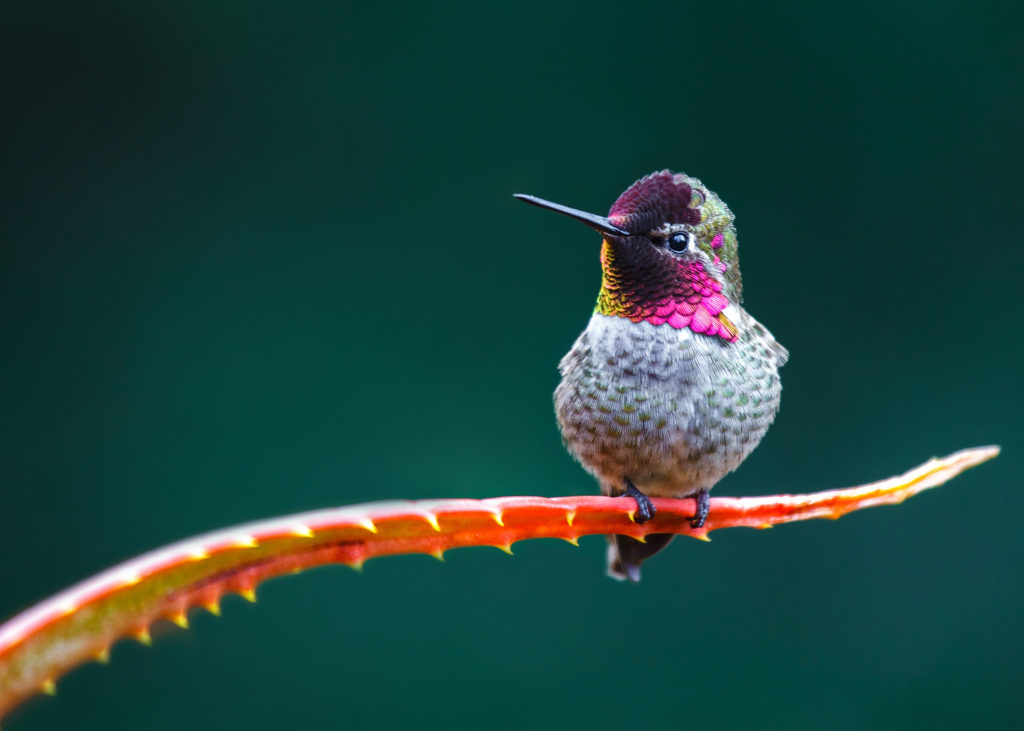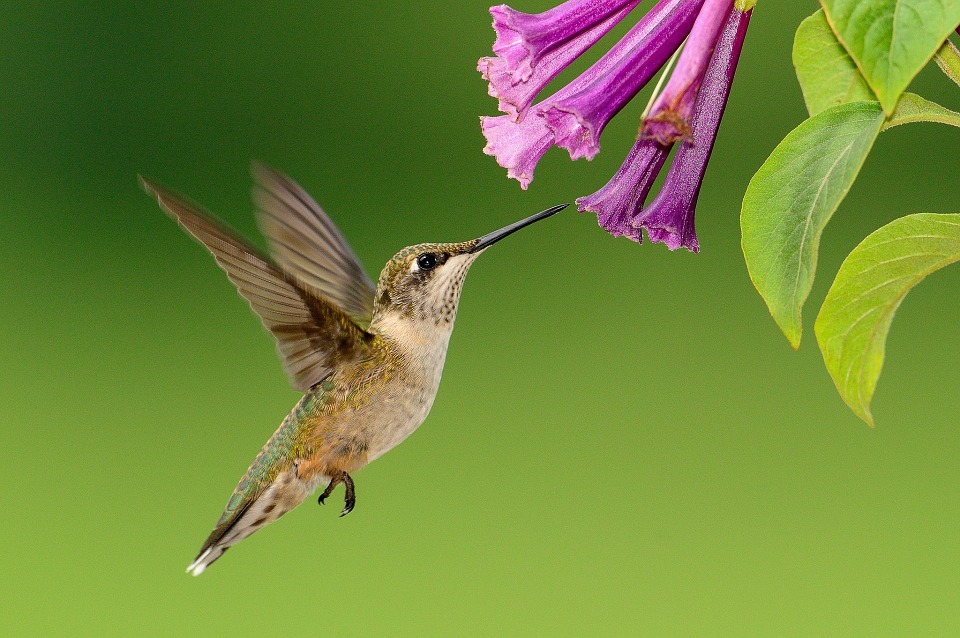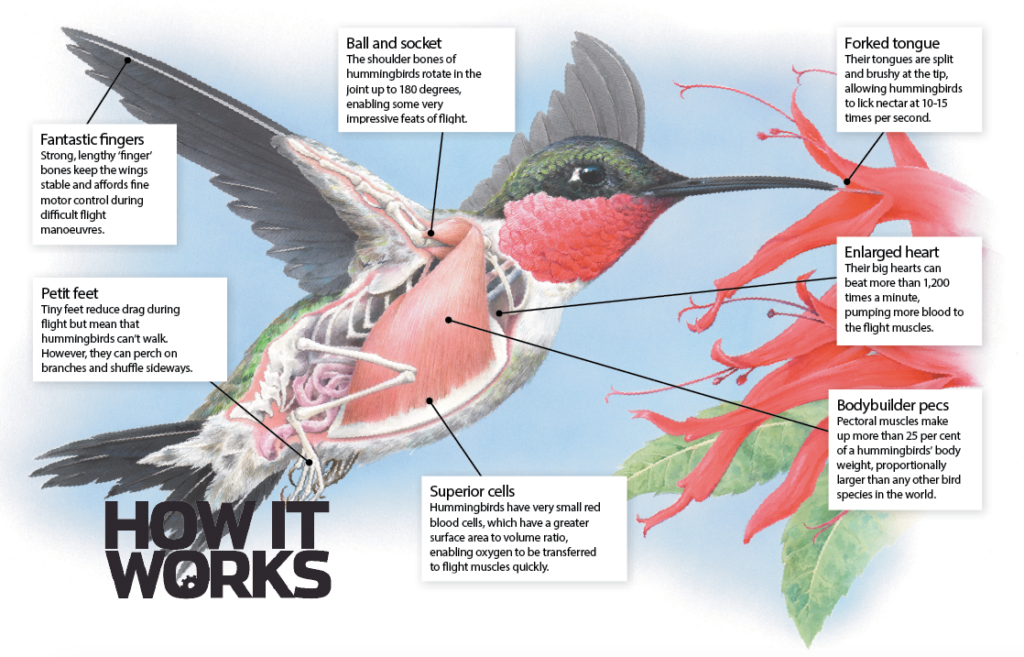Hummingbirds: How do they hover?
by Scott Dutfield · 02/05/2019

Learn how the world’s tiniest birds are uniquely adapted to their roles in specific habitats
Like tiny helicopters flitting among a forest of flowers, hummingbirds are the ultimate hovercraft. In fact, their very name comes from the humming sound created by their rapidly flapping wings. However, all this stationary flight comes at a tremendous cost.
Without nectar to power their high-octane bodies, hummingbirds would starve to death in about two hours. As a result they must spend about 90 per cent of their flying time hovering right beside the flowers upon which they feed. The nectar they consume is essentially sugar water, and they need a lot of it. But it isn’t all that they eat. Hummingbirds also snatch up insects such as mosquitos, flies, gnats and aphids. Researchers have found as many as 50 insects in the stomach of a single hummingbird. Suffice it to say, these animals are ravenous. A person using the same amount of energy as a hummingbird would need to scoff 300 hamburgers per day!
Scientists have identified at least 343 different species of hummingbird, which makes them the second largest family of birds in the world. Despite this impressive number, these diminutive birds are only found in North and South America and the Caribbean. Within this range, some species migrate with the seasons for over 800 kilometres. Other species stay put during the entire calendar year.
Hummingbirds are surprisingly aggressive. In countless backyards they lay claim to nectar birdfeeders, chasing away other hummingbirds. And they aren’t afraid to pick on someone bigger than themselves either — they commonly attack crows, jays and even hawks if they feel their territory is threatened.

How they hover
Kestrels, kingfishers and even ospreys will hover on occasion when hunting prey from above. But none of these other birds have fully mastered the technique in the way that hummingbirds have. While most birds generate lift and power for forward motion during only the downstroke of their flight pattern, hummingbirds generate lift all the time. They do this by moving their wings forward and backward in a figure of eight pattern, much like a dragonfly. Hummingbirds can soar forwards, left, right, up and down like any other bird, but they’re the only ones that can pilot themselves in any direction. They can fly backwards and upside down, and they even do backward somersaults! Their unique anatomy is the key to these manoeuvres. Their skeleton is fused in a few places to eliminate the weight of extra muscles, and the bones that they do have are hollow.
This article was originally published in How It Works issue 104, written by Joe Levit
For more science and technology articles, pick up the latest copy of How It Works from all good retailers or from our website now. If you have a tablet or smartphone, you can also download the digital version onto your iOS or Android device. To make sure you never miss an issue of How It Works magazine, subscribe today!






